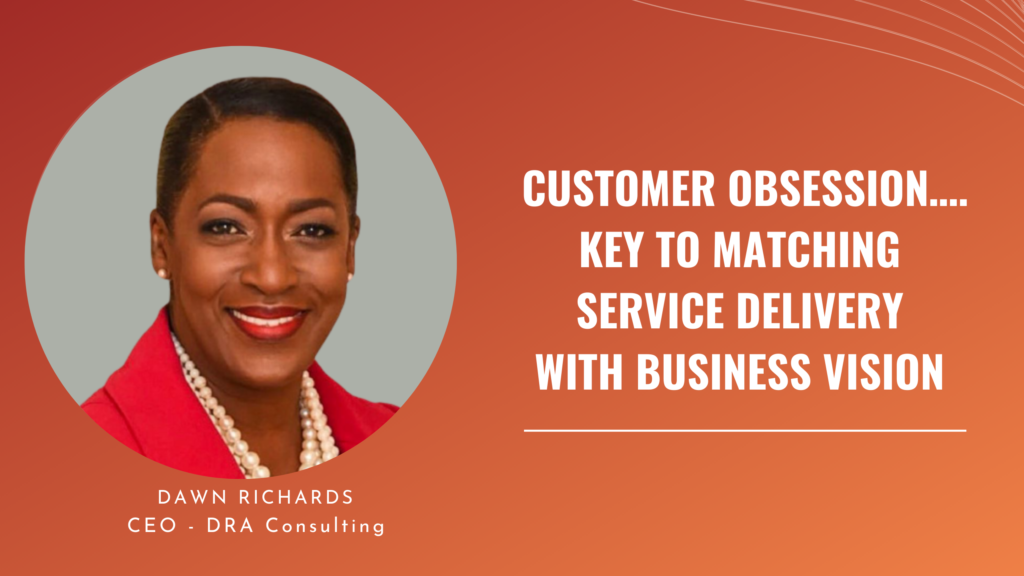Okay, confession time. I have resisted incorporating the phrase, “customer obsession” into my customer experience and service excellence lexicon. Until now. I’ve become convinced that if businesses hope to make a dent in correcting the dearth of effort to get the service excellence model right, they will need to become obsessed with their customers.
Over the years, whilst all of the voices of customer experience expertise were singing the high praises of customer obsession, I was thinking that this level of intensity was akin to overkill. I am a service evangelist, but somehow, to me, the phrase seemed a little too invasive. Well, thankfully, the customer experience universe has evolved to the point where the word “obsession” has begun to take on a more scientific characterization. So, I’m a convert.
Many businesses, especially those that are sales-driven, design their operations around sales and not necessarily around the customer.
When a business designs its operations and sets its strategy around scaling customer happiness, that’s customer obsession. So, it stands to reason that one of the standard questions that a business will ask itself during its annual strategic planning exercise, would be, “How do we scale up customer happiness this year, over what we did last year?”
You can hear the angels singing when the business vision and the service delivery vision coincide to produce a phenomenal customer experience. The reality though, is that many businesses find themselves in the converse scenario, often due to the widespread ailment of indifference to putting in the effort to achieve customer happiness.
One of the reasons for this converse scenario conundrum, is that many businesses, especially those that are sales-driven, design their operations around sales and not necessarily around the customer. If a business is centred around sales, it’s sales-driven, if it’s centred around the customer, it’s customer-obsessed and I can guarantee that only one of these two areas of focus deliver sustained customer retention, continuous customer acquisition and repeat business.
So, how does a business that has a lukewarm approach to its customers, become customer-obsessed? Well, asking four questions would be a good start.
Boardroom conversations in a customer-obsessed business, centre around how customers can be served equally well, whether they conduct business in-person, via a mobile app, over the telephone or via an online channel. Equally popular, would be the discussions around creating seamless user interfaces, expanding self-service options for conducting transactions, adding multi-channel payment options and leveraging technology to ensure that customers experience ease of doing business.
In those businesses that are customer-obsessed, I suspect that the majority of high-level strategies are decided on the basis of data extracted from social listening sources, structured voice-of- the-customer channels, customer relationship management systems and the usual marketing pipeline channels.
Additionally, I imagine that high-level decisions about service delivery strategies, during these boardroom discussions are not taken lightly and would tend to centre around the long-game strategy of achieving perpetual customer care. Of course, this does not negate decisions being taken, from time to time, on the basis of “gut-feelings and intuition,” by leaders who are experts at their game.
Question one, “What problem or need are we solving for our customers?”
So, how does a business that has a lukewarm approach to its customers, become customer-obsessed?
Well, asking four questions would be a good start. Question one, “What problem or need are we solving for our customers?” A by-product of responding to this question will be the deeper clarity that will emerge around identifying the ideal customer profile of the business.
Question two, “How do we support our response to question one, whilst being guided by the five new drivers of competition?” It bears mentioning here, that one of the major differentiators of customer-obsessed businesses, is their focus on designing immersive experiences that are personalized, for their customers.
Question three, “How can we maximize technology to amplify the ease of doing business for our customers?” Question four, “What is the best business model configuration to achieve success in response to questions one, two and three?”
Question two, “How do we support our response to question one, whilst being guided by the five new drivers of competition?”
Of course, additional intentional questions would need to be addressed in the pursuit of creating a customer-obsessed culture that delivers business value. These would include the effective utilization of physical resources, human capital investment, value chain logistics and customer journey optimization.
What can I say about effective leadership capital in the customer-obsessed business? One of the superpowers of the leadership team has to be the diffusing and scaling of a supportive culture across the business. The leaders should be repeaters-in-chief of the vision, strategy and execution that drive such a culture, using trailblazing language that gets employees fired-up and motivated.
Finally, customer obsession means being laser-focussed on making the customer universe a better place, through the lens of one very simple rule….obsessive customer care.

